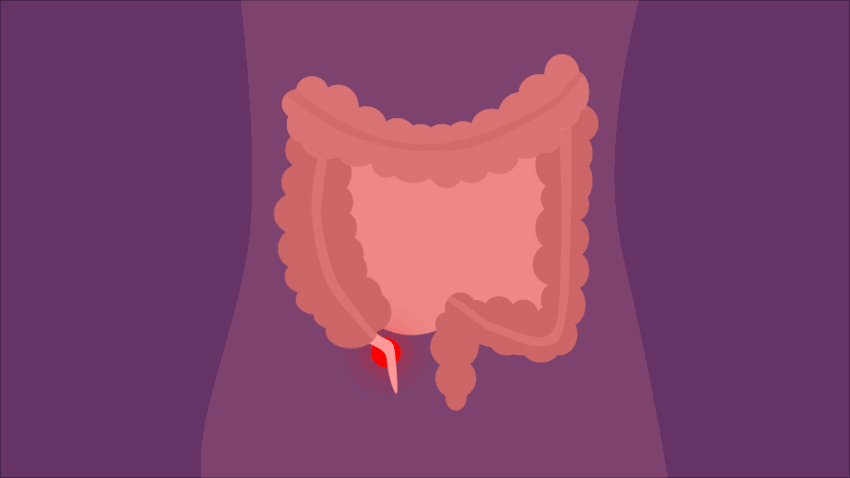A new study examines the factors associated with a potentially missed diagnosis of appendicitis in children and adults in the emergency department.
12:00 PM
Author |

While symptoms of appendicitis may be common, a new study suggests that accurately diagnosing the condition in the emergency department may be more challenging.
The study, published in JAMA Network Open, highlights that appendicitis is one of the most common surgical emergencies in the United States, but previous data show an appendicitis diagnosis is missed in 3.8% to 15% of children and in 5.9% to 23.5% of adults during an emergency department visit.
"In this study, we examined patients that initially presented to an emergency department with symptoms of appendicitis, but were not diagnosed at that first presentation," says the study's lead investigator, Prashant Mahajan, M.D., MPH, a professor and vice-chair of emergency medicine at Michigan Medicine and division chief of pediatric emergency medicine at C.S. Mott Children's Hospital.
Using insurance claims data, Mahajan and his team found that 6% of adults and 4.4% of children, who initially presented to the emergency department with symptoms associated with appendicitis, weren't diagnosed with appendicitis at the initial visit, but rather, at a repeat health care visit.
"The repeat health care visit could be either again at the emergency department or another health care facility, and the majority of these diagnoses were made within seven days of the initial emergency department visit," says Mahajan, also a member of the University of Michigan Institute for Healthcare Policy and Innovation.
Factors associated with a missed diagnosis
Mahajan and his team investigated factors that could explain why a diagnosis of appendicitis was missed during the patient's first visit to the emergency department.
Our data suggests that patients with abdominal pain who visit the emergency department may need some form of close follow-up health care to enhance the diagnosis of appendicitis.Prashant Mahajan, M.D., MPH
He explains that symptoms of appendicitis are common, including abdominal pain, constipation, nausea and/or vomiting, fever and diarrhea.
"Many instances of potentially missed appendicitis in children and adults were initially labeled as constipation," Mahajan says. "Suggesting that in some instances, cases with appendicitis were either misdiagnosed as constipation or the label of constipation may have led to a particular type of cognitive bias called premature closure, which may have predisposed the provider to a missed diagnosis."
The research team also found a missed diagnosis was more common in women and patients with pre-existing medical conditions. In addition, diagnostic tests played a role in who was or was not diagnosed.
Like Podcasts? Add the Michigan Medicine News Break to your Alexa-enabled device or subscribe for updates on iTunes, Google Play and Stitcher.
"One other finding that was particularly interesting is that patients who received only abdominal X-rays were more likely to be in the potentially missed appendicitis group," Mahajan says.
He notes that this finding suggests the need for health care providers to have better guidance on appropriate use of imaging.
"There is a potential to reduce unnecessary abdominal X-rays for the evaluation of abdominal pain, and use computed tomography (CT) scans for a more select group of patients either in the emergency department or on a follow-up visit," Mahajan says.
But, he notes that just because the study findings suggest that patients who were accurately diagnosed with appendicitis at the initial emergency department visit had more CT scans, the scans shouldn't always be automatically performed.
"We're not saying that CT scans should be used on all cases of abdominal pain," Mahajan says. "Instead, based on the study finding that most cases were diagnosed at the repeat visit, we hope this finding will give guidance to emergency department and other health care providers on when to follow up with patients, as well as when to request advanced imaging."
Follow-up care for appendicitis
Mahajan says the study highlights the need for health care providers to follow up with patients.
"Our data suggests that patients with abdominal pain who visit the emergency department may need some form of close follow-up health care to enhance the diagnosis of appendicitis," Mahajan says.
In addition, he says this study can shed further light on the frequency of diagnostic errors.
MORE FROM THE LAB: Subscribe to our weekly newsletter
"This study provides health care providers with guidance regarding follow-up care in order to reduce the burden of diagnostic errors, which is estimated to occur in 12 million people every year in the U.S. and results in billions of dollars of unnecessary health care expenses," Mahajan says.
"Since the majority of diagnostic errors are preventable, our findings add to the current state-of-science to help improve diagnostic quality."
Paper cited: "Factors Associated With Potentially Missed Diagnosis of Appendicitis in the Emergency Department," JAMA Network Open. DOI: 10.1001/jamanetworkopen.2020.0612

Explore a variety of health care news & stories by visiting the Health Lab home page for more articles.

Department of Communication at Michigan Medicine
Want top health & research news weekly? Sign up for Health Lab’s newsletters today!





